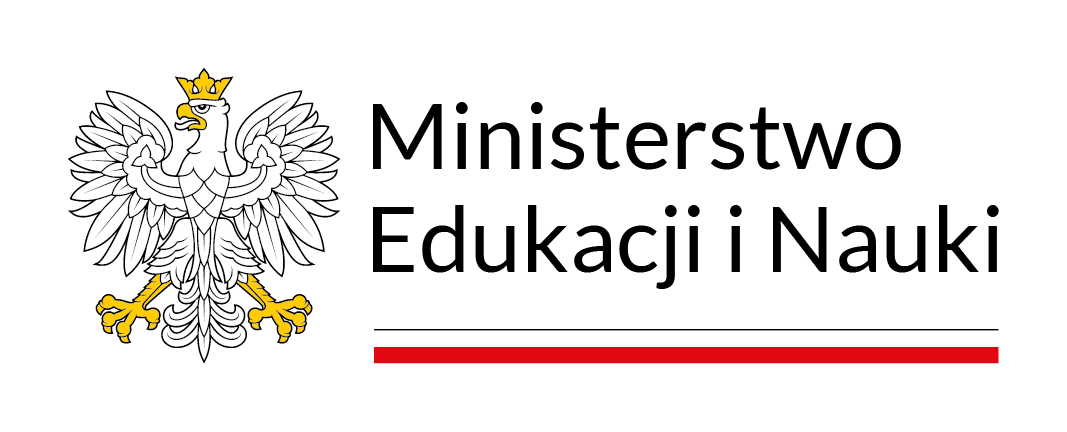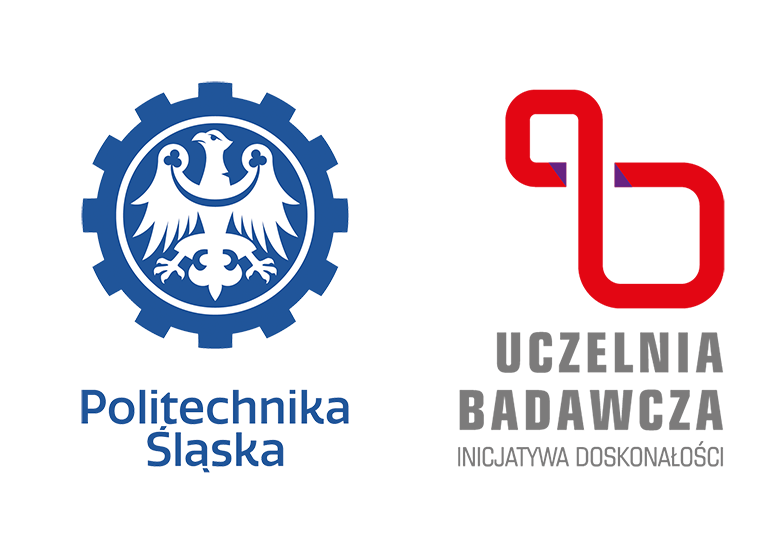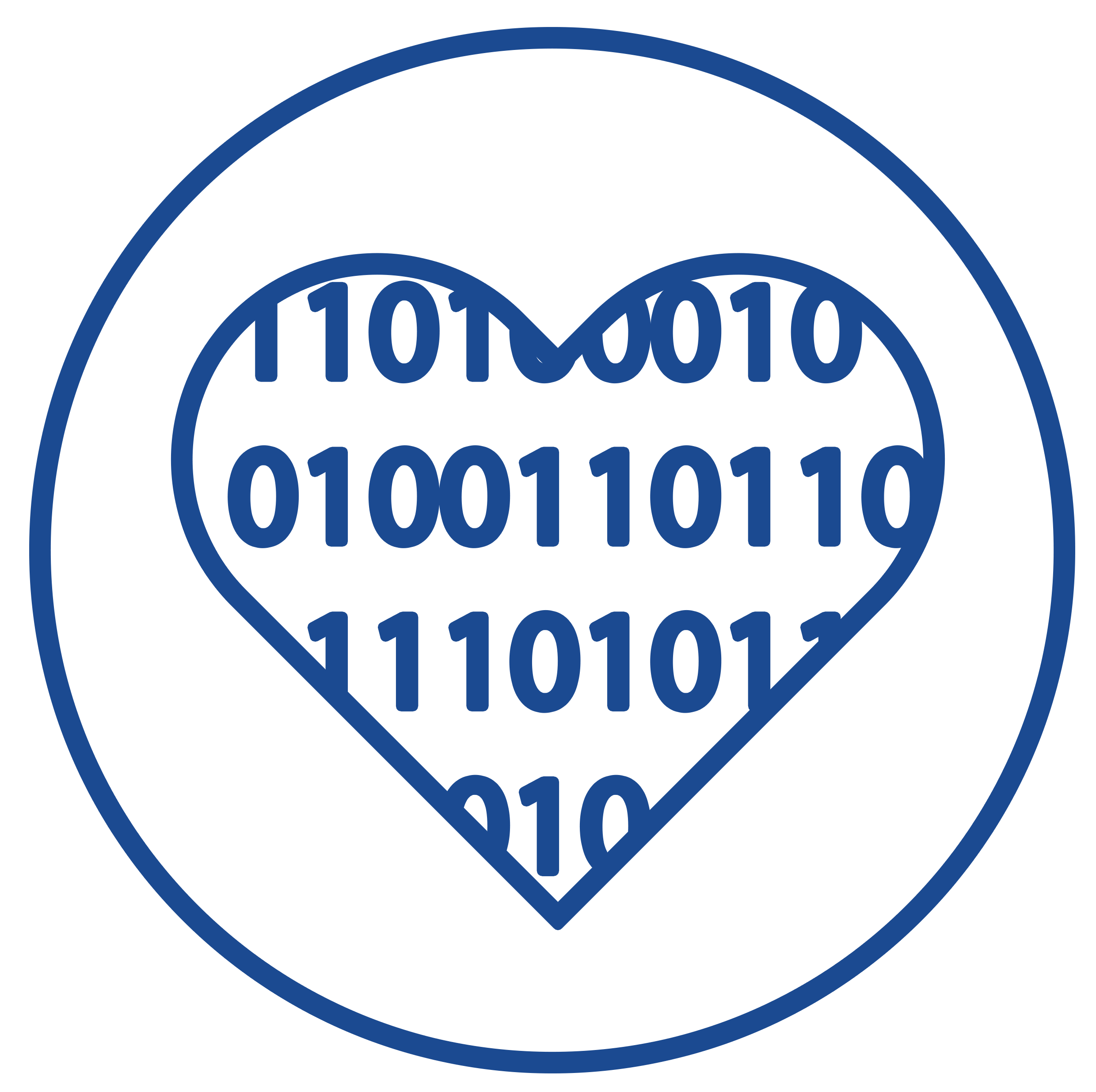Symposium of the Polish Bioinformatics Society 2023 — Keynote Speakers
We are delighted to present you with the keynote speakers for the PTBI Symposium 2023:
Dr. Djork-Arné Clevert, Head of Machine Learning Research, Vice President, Pfizer, Berlin, Germany
Dr. Ana Conesa, Research Professor Institute for Integrative Systems Biology- Spanish National Research Council, Spain
Prof. dr hab. inż. Andrzej Polański, Head of the Scientific Council for Technical Informatics and Telecommunication at the Silesian University of Technology, Gliwice, Poland
Dr hab. Joanna Sułkowska prof. UW, Head of the Interdisciplinary laboratory for modeling biological systems at the Centre of New Technologies at the University of Warsaw, Poland
Dr. Kasthuri Venkateswaran, Senior Research Scientist, California Institute of Technology, Jet Propulsion Laboratory; Biotechnology and Planetary Protection Group, Pasadena, California, USA
Djork-Arné Clevert
Head of Machine Learning Research, Vice President, Pfizer, Berlin, Germany
Title of a talk: Molecular representation learning for drug discovery
Abstract:
Recently, molecular representation learning has solidified its position as an indispensable instrument in chemoinformatics, driving significant strides in drug discovery by enhancing the precision of bioactivity and toxicology predictions. In this presentation, I will delineate the foundational principles of molecular representation learning. Further, I will elucidate their application in bioactivity prediction and biological-conditioned drug de novo design. I will conclude by emphasizing their pivotal role in addressing molecular inverse problems.
Ana Conesa
Research Professor Institute for Integrative Systems Biology- Spanish National Research Council, Spain
Ana Conesa is Research Professor at the Institute for Integrative Systems Biology (CSIC) in Valencia (Spain), Courtesy Professor at the University of Florida. Since 2022 she is a member of the Spanish Royal Academy of Engineer and of the Board of Directors of the International Society for Computational Biology.
Ana Conesa’s lab is interested in understanding functional aspects of gene expression at the genome-wide level and across different organisms. Her group has developed statistical methods and software tools that analyze the dynamics aspects transcriptomes, integrate these with other types of molecular data and annotate them functionally, with a special focus on Next Generation Sequencing (NGS) data. A strong drive in her research is helping the genomics community to bridge the gap between data and knowledge by creating bioinformatics tools that everybody can use. Some of our popular software tools are Blast2GO, PaintOmics, maSigPro, NOISeq, Qualimap, SQANTI, tappAS, etc. She has led multiple EU projects to develop methods for the analysis of the transcriptome, more recently with a focus on the utilization of long read sequencing to characterize transcriptome complexity. She is also co-founder of Biobam Bioinformatics, a start-up that provides bioinformatics tools for biologists. She has published 156 research papers that have received more than 34.000 citations and has an h-index of 57.
Title of a talk: Long reads sequencing for the analysis of the transcriptome
Abstract:
Third-generation long-read sequencing technologies offer the potential to sequence entire transcripts and unravel the intricacies of transcriptomes. However, the analysis of long-read transcriptomics (lrRNA-seq) data presents numerous challenges. These challenges encompass distinguishing biological variability from technical noise, accurately predicting transcript models, providing precise estimates of transcript expression levels and differential expression, and elucidating the biological significance of isoform diversity. In my presentation, I will showcase the research conducted in my laboratory that addresses these challenges. Moreover, I will discuss how, through the implementation of appropriate experimental techniques and bioinformatics approaches, lrRNA-seq has the capability to unveil fresh insights into the biology of the transcriptome.
Andrzej Polański
Head of the Scientific Council for Technical Informatics and Telecommunication at the Silesian University of Technology, Gliwice, Poland
Andrzej Polanski obtained his PhD in 1991, in the area of Automatic Control in Technical Sciences, in the Faculty of Automatic Control, Electronics, and Computer Science, Silesian University of Technology, Gliwice, Poland.
His research interests include areas of bioinformatics, exploratory data analysis and classification, systems theory and biostatistics.
He is the author of over 150 scientific publications, cited in the Google Scholar Database over 2000 times.
Title of a talk: Influence of passenger mutations on expansion and extinction of cancer clones
Abstract:
Tumour evolution is strongly related to somatic mutations occurring in evolution of cancer cells. Somatic mutations in cancer cells are classified as either driver or passenger. Driver mutations occur very rarely in cellular replications, but have strong causative effect on cancer development. Majority of somatic mutations found in DNA are passenger mutations, which do not exert strong effect on the tumour growth. Initially passenger mutations were considered as fully evolutionary neutral. However, numerous recent experimental studies provide evidence that passenger somatic mutations are likely to exert either weakly deleterious or weakly advantageous effect on tumour expansion.
In the talk experimental evidence for evidence that accumulated passenger mutations can make an impact on cancer evolution, parallelly to drivers, is first reviewed. Arguments include (i) existence of molecular signatures distinguishing between cancer types and their progression scenarios (ii) the use of molecular functional impact scores, which prove that aggregated effect of passengers plays role in tumorigenesis.
Next, results of stochastic simulations (with Gillespie algorithm) of the model of cancer cells population evolution driven by rare, strongly advantageous driver mutations accompanied by frequent passenger mutations, which are either mildly advantageous or mildly deleterious, are shown. In simulations, cancer cells population stratifies into subpopulations defined by composition of driver mutations called cancer clones. In the course of evolution of cancer clones the phenomenon of clonal interference is observed. Clonal interference consists of events of emergence of new clones and extinction of old ones. Emergence and extinction of clones is under the influence of aggregated effects of passenger mutations, which occur in the evolution. The influence of cumulated passenger mutation of two types is quantified and compared to experimental data.
Joanna Sułkowska
Head of the "Interdisciplinary laboratory for modeling biological systems" at the Centre of New Technologies at the University of Warsaw, Poland
Dr hab. Joanna Sułkowska is a head of the "Interdisciplinary laboratory for modeling biological systems" at the Centre of New Technologies at the University of Warsaw. In 2007 she defended with distinction her doctoral dissertation in the field of biophysics, devoted to the characteristics of mechanical properties of proteins. In 2016 she obtained her habilitation at the Faculty of Chemistry of the University of Warsaw and professor position in 2018. For several years, as part of a postdoctoral internship, she worked at the University of California, San Diego. She is an author of over 80 scientific publications. Joanna Sulkowska has been awarded many times for her scientific achievements. She received e.g. Installation and Young Investigator award from the European Molecular Biology Organization (EMBO), grants from the National Science Centre, the Foundation for Polish Science, and the Ministry of Science and Higher Education in Poland.She is the winners of the 2018 National Science Centre Award in Poland in the field of Life Sciences, and award from MNiSW, 2020. She received the international prize Unesco-L'Oreal ''Rising talent''. She was chosen as a person of the year “MocArty – człowiek roku 2017” by Polish Radio RMF Classic. She was also ranked among the group of 50 brave people and in the initiative Jutronauci by Gazeta Wyborcza (PL) in 2017. She gave as well many public lectures.
For her greatest scientific achievement so far, she considers a discovery and characterization of non-trivial topology in proteins such as knots, slipknots, lassos and theta curves, the determination of mechanisms of their formation and relationships with biological function.
Title of a talk: Knot or not? Sequence-based identification of knotted proteins with machine learning
Abstract:
Knotted proteins, although scarce, are crucial structural components of certain protein families, and their roles remain a topic of intense research. Capitalizing on the vast collection of protein structure predictions offered by AlphaFold, this study computationally examines the entire UniProt database to create a robust dataset of knotted and unknotted proteins. Utilizing this dataset, we develop a machine learning model capable of accurately predicting the presence of knots in protein structures solely from their amino acid sequences, with our best-performing model demonstrating a 98.5% overall accuracy. Unveiling the sequence factors that contribute to knot formation, we discover that proteins predicted to be unknotted from known knotted families are typically non-functional fragments missing a significant portion of the knot core. The study further explores the significance of the substrate binding site in knot formation, particularly within the SPOUT protein family. Our findings spotlight the potential of machine learning in enhancing our understanding of protein topology and propose further investigation into the role of knotted structures across other protein families.
Kasthuri Venkateswaran
Senior Research Scientist, California Institute of Technology, Jet Propulsion Laboratory; Biotechnology and Planetary Protection Group, Pasadena, California, USA
With over 47 years of research spanning marine, food, and environmental microbiology, Dr. Venkateswaran has led the charge in exploring the unseen world of microorganisms. He directs ISS Microbial Observatory projects, investigating the microbiota associated with U.S. nodes as well as the Kibo Japanese Experiment Modules. Applying his extensive research in molecular microbial community analysis, he's deepened our understanding of the ecological roles of microbes. His field studies have taken him to some of the most extreme environments on Earth and beyond - from the depths of the sea (2,500 m), to the meticulous assembly facility clean rooms of various NASA and European Space Agency facilities, to actual spacecraft missions (including Mars Odyssey, Genesis, Mars Exploration Rovers, Mars Express), and even to the unique space environment in Earth orbit (ISS, ESA Columbus facility). Dr. Venkateswaran's journey underscores the extraordinary breadth and depth of microbial ecology, traversing from the deep sea to outer space.
- Leads multiple research and development initiatives for the Mars Program Office, which focus on the cleaning, sterilization, and validation of spacecraft components.
- Oversees the microbial monitoring of ISS modules and spacecraft assembly facilities.
- Manages several NASA Research Announcement (NRA) awards across various programs, including Planetary Protection, Space Biology, Human Research, and Astrobiology.
- Provides technologies for microbial monitoring applicable to commercial airline cabin air, as well as medical industrial uses, including the processing of tissue and organ transplants.
Title of a talk: Unraveling the Microbial Enigma: Overcoming Bioinformatics Barriers in the Final Frontier
Abstract:
We characterized the microbiomes of environmental surfaces and atmospheric samples within the International Space Station (ISS) to understand their relationship to crew health and hardware maintenance. Through the Microbial Tracking projects, we created a detailed microbial census of the ISS environments using both advanced molecular microbial community analyses and traditional culture-based methods. These "omics" methodologies yielded an extensive microbial census, providing significant insights into the changes in populations of beneficial and potentially harmful microbes induced by spaceflight.
We will discuss the lessons learned from ISS missions about microbial prevalence using iTag sequencing, metagenomics, and resistomes. Additionally, while characterizing approximately 3,000 bacterial and fungal strains, we discovered several novel species, and we will present the characterization of these new species. Our research also revealed the virulence characteristics of fungi and the production of secondary metabolites of biotechnological importance.
The findings from the Environmental "Omics" project (basic science) should be leveraged to enhance human health and well-being within closed systems. In other words, the goal of the microbial tracking research is to "translate" findings from fundamental research into medical practice (pathogen detection) and meaningful health outcomes (countermeasure development). The "omics" data sets have been added to the NASA GeneLab bioinformatics environment, which includes a database, computational tools, and improved methods. This will be made open to the scientific research community to foster innovation.
Development of nanoengineered material to resist micro-organismal biofilm formation in space
Microgravity is known to affect bacteria and fungi in many ways, one of which is biofilm formation, which can consequently lead to biofouling of space hardware and life support systems, in addition to enhancing resistance to antibiotics and other anti-microbial agents. Our approach is to develop novel coating technologies that can significantly change the adhesion properties of surface materials to inhibit biofilm formation. GoldShield (GS) has developed a unique biofilm preventive technology that creates a residual performing action when applied, with protection that continues for years. Systematically using “omics” techniques to analyze the molecular mechanism(s) associated with biofilm formation is needed to understand why ISS microbes produce more biofilms, which can help in the design of nanoengineered materials that prevent biofilm formation in spaceflight conditions, potentially benefiting future NASA life support systems.
Data mining on Metagenome Assembled Genomes for Antimicrobial Resistant Genes
Metagenome assembled genome (MAG) approaches have become new confirmatory analysis for genomic data for taxonomic identification, metabolic profiling, microbiome dynamics, and host-microbe relationship. MAG makes subjective interpretation of genes and helps scientists to better understand its antimicrobial resistance (AMR), interaction with other microbes in the microbiome, and association with the host. The objective of this study is to data mine the Microbial Tracking – 1 (MT-1) project generated MAGs and perform an in-depth in silico analyses. The MT-1 MAGs (n=27), WGS of ISS bacteria (n=12), and their type strains were compared for their differential AMR gene characteristics to understand the effect of microgravity. The in silico bioinformatics analyses revealed that 13 common AMR genes were shared among the 12 bacterial species that were considered for downstream analysis.
Whole Genome Analysis of Microorganisms Isolated from the International Space Station and Spacecraft Associated Environments.
NASA’s Jet Propulsion Laboratory (JPL) has isolated and archived over 3,000 bacterial and fungal strains from spacecraft assembly facilities (SAF) constructing spacecraft destined for Mars and from the ISS. These unique microorganisms have been exposed to microgravity, high levels of radiation, extremely clean conditions and/or low nutrients. These selective pressures select for bacteria and fungi that can thrive under harsh conditions and can also cause them to become more virulent, grow faster, form an enhanced biofilm, and/or gain antibiotic resistance. Previous studies have focused on sequencing 16S rRNA gene (bacteria) and Internal Transcribed Spacer (ITS; fungi) regions to identify these microorganisms. However, these studies do not reveal much about the isolate since a single marker gene is a poor substitute for predicting the molecular mechanisms involved in the traits associated with resistance properties described above. To address this, 3,000 strains isolated from the JPL SAF and the ISS were subjected to whole genome sequencing (WGS). The collected isolates span a variety of Mars missions, including but not limited to Odyssey, Mars Exploration Rovers, Phoenix, and Mars Science Laboratory. The WGS of 3,000 strains were compared with type strains in order to determine their phylogenetic affiliations. These WGS data sets will allow researchers to predict their metabolic potential as well as identify genes and pathways that allow them to survive the harsh space conditions. The genomics data collected and deposited in NASA GeneLab will help identify model microorganisms based on their robustness and resistance traits and will enable the development of better countermeasures including cleaning and sterilization technologies. Additionally, WGS data mining will help to ensure the safety and health of astronauts as well as inform the designs of future spaceflight experiments.
Effects of Space Flight on Radiation Tolerant Fungi
Seven radiation-tolerant fungi isolated from the failed block of the Chernobyl nuclear power plant and surrounding areas, and one radiation-tolerant fungi isolated from the ISS, were flown on the ISS and compared with control specimens kept on the ground. These fungi were selected for this study to ascertain the effects of microgravity and the space environment on the growth and physiological responses of these organisms to spaceflight. Fungi are known to produce secondary metabolites, especially when stressed, and some of these secondary metabolites have become medically important drugs. Among several fungal strains tested, two radiotropic strains, Cladosporiaceae IMV 00045 and Byssochlamys sp. IMV 00236, demonstrated a high survival rate from a 2,000 J/m2 dose of UV254 irradiation. Metabolome analysis further confirmed that space conditions altered the molecular suite of ISS-grown A. niger. The characterization and comparison of both flight-and ground-control specimens demonstrated differences in these radiation-tolerant fungi that may lead to the discovery of useful natural compounds.
Instrumentation to support International Space Station “omics” capabilities
In situ detection and measurement of biomolecules in the ISS and future Human to Mars missions require automated nucleic acids (NA) extraction instruments. The microbial monitoring (SmartCyler and RAZOR) and NA sequencing (MinION) platforms were adopted by NASA and successfully generated “omics” data using manual NA extraction procedures. Several limitations in these manual procedures were recognized which led to the development of an automated nucleic acid extraction system (µTitan). The µTitan system is streamlined, requires minimal crew time, reduces the amount of contamination between samples, and produces consistent results. In addition to the µTitan development, prototypes that enable effective transfer of fluids under microgravity from several sample collection and concentration units for SmartCycler, RAZOR, and MinION were designed.
The novel µTitan system was tested, validated, and compared with the Maxwell-16 automated NA extraction system currently used for Mars 2020. Samples processed were from the spacecraft assembly cleanrooms (lab setting), a microbial mat sample (roadside rural area), and several samples from Yellow Stone National Park (YNP; onsite at the remote wilderness area). Drop tower tests (31 m height and 22 m free fall; 2.1 seconds) were conducted for the µTitan and the system passed the vibration test. The preliminary results have shown that µTitan system performs as well as the Maxwell-16 in extracting NA and shot-gun metagenome sequencing of this DNA using MinION in the field (on the back of automobile in YNP) and the laboratory-based Illumina HiSeq system produced comparable results.
Conference menu
- Main page
- Conference scope
- Program & Book of Abstracts
- Important dates
- Keynote Speakers
- Instructions for authors
- Conference Fees
- Registration and Abstract submission
- Conference Venue & Arrival
- Social Programme
- Organizing Comitee and Contact
- Programme Comittee
- Partners and Sponsors
Sponsors and partners

Program Doskonała Nauka II (nr rej. KONF/SP/0441/2023/01)



POB1 Gliwice - przyszłosć jest tu





